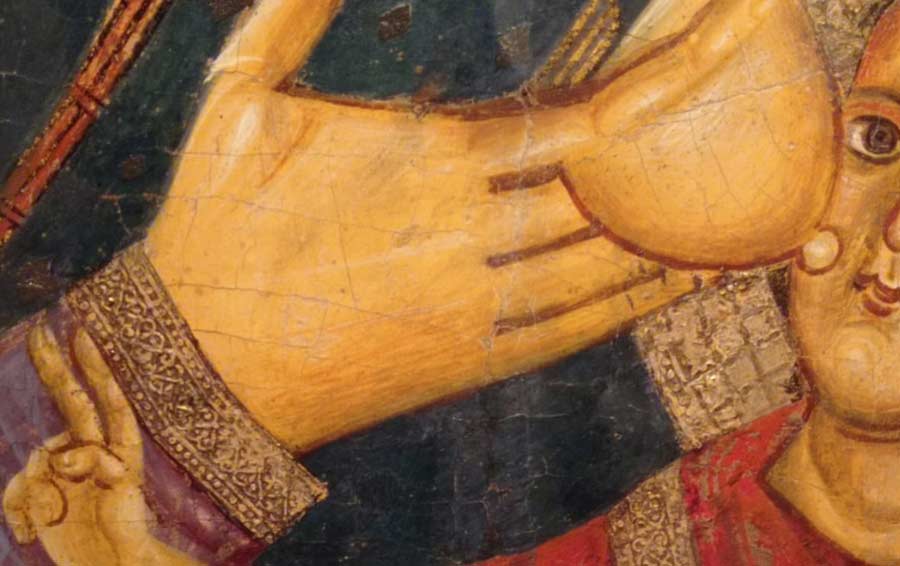Can we speak of Christian Middle Ages? Of an age so deeply oriented in a religious sense as to assume its connotation in a prevalent way? The question has always been posed: the very effort to answer has helped to define that Age, highlighting both its contours and many individual elements. Yet it remains there, as a provocation, to bring out what Christianity itself is, how it became incarnate in history, manifesting its specificity within the societies of those centuries, in the choices of individuals as well as in the actions of institutions. For this reasons a blog on the topic can be useful, as space open to researchers and scholars of History of Christianity, history of Religions, Medieval history, History tout court.
Different points of view can contribute to highlight Christianity as an agent of transformation of society, be it an element of fruitful extraneousness or an internal motive. An exchange of critical readings, news, electronic resources and tools, sources, ideas can illuminate new and more open questions.
If adherence to the Gospel becomes an identity of individuals and groups, the problem arises of understanding how, over time, that identity has been defined by contrast with others, by identifying differences.
In what ways has a Christian identity historically emerged and established itself? To what extent can it be declined in the plural? How can it include differences and nuances without being nullyfied?
What is the specific Christian within a society? Furthermore, how and at what time does identity become a unifying motive?
The role played by the institutions is very evident in written sources, thus assuming the role of a privileged area of European medieval historiography. However, the size of the contributions of individuals (as well as will, decisions, and actions) are also part of a living framework of problematic definition.
In this multiple perspective, the result can be a dynamic Christianity that interacts and manifests itself in the elaboration of thought, in theology and in philosophy, into discussions and disputes, in the richness of the liturgy and in the society, considered as a whole.
Right within reality, in the heart of the factuality of events, depths of Christianism emerge.
Despite the irreducible distance between us and the Middle Ages, on those same depths we recognize a link between that living world and the major questions challenging our today.
It is so that, avoiding the banality of the actualizations, it becomes possible to draw on the variety of situations and solutions of that time as a heritage to open new perspectives for the hic et nunc in which we are immersed.
Rome, December 2023
Renata Salvarani © All rights reserved
Medioevo cristiano: identità e estraneità
Elementi per una delimitazione
Si può parlare di un Medioevo cristiano? Di un’epoca così profondamente orientata in senso religioso da assumerne la connotazione in modo prevalente? La domanda si è posta da sempre e lo sforzo di rispondere ha contribuito a definire di quell’età sia i contorni, sia le tante componenti. Eppure resta lì, come una provocazione, a fare emergere che cosa sia il Cristianesimo stesso, come si sia incarnato nella storia, manifestando il suo specifico dentro le società di quei secoli, nelle scelte dei singoli così come nelle azioni delle istituzioni.
Per questo può essere utile un blog sul tema, uno spazio aperto a ricercatori e studiosi di storia del Cristianesimo, storia delle religioni, storia medievale, Storia tout court, per contribuire, nel confronto fra posizione diverse, a mettere in luce il Cristianesimo come agente di trasformazione della società, sia esso elemento di feconda estraneità o motivo interno che si fa istituzione. Uno scambio di letture critiche, di notizie, risorse e strumenti elettronici, fonti, spunti può illuminare di riflessi nuovi questioni quanto mai aperte.
Se l’adesione al Vangelo si fa identità, di singoli e di gruppi, si pone il problema di capire come, nel tempo, quell’identità si sia definita per contrasto e per contrapposizione rispetto ad altre, per individuazione di differenze.
In quali modi è storicamente emersa e si è affermata una identità cristiana? Fino a che punto la si può declinare al plurale, contenendovi all’interno differenze e sfumature senza che le poliedricità la facciano esplodere, infine, nullificandola?
In che cosa consiste lo specifico cristiano all’interno di una società? Ancora, in che modo e con quali tempi l’identità diventa motivo unificatore o uniformante?
Il ruolo svolto dalle istituzioni si presenta all’indagine storica codificato, depositato nella memoria scritta, assumendo così il ruolo di ambito privilegiato della storiografia medievista europea. Tuttavia, anche la dimensione degli apporti dei singoli, le volontà, le decisioni, le azioni sono parte di un quadro vivo, di problematica definizione.
Ne affiora un Cristianesimo dinamico, che interagisce e si manifesta nelle elaborazioni del pensiero, nella teologia e nella filosofia, tra discussioni e dispute, che si esplica nella ricchezza della liturgia e nella società, nel suo insieme. Proprio dentro la realtà, nel cuore della fattualità degli eventi emergono le sue profondità.
Su quelle profondità e sul suo fondamento, nonostante l’irriducibile distanza tra noi e i secoli tra il primo e il secondo millennio, si riconosce un legame con le domande che interpellano il nostro oggi. E’ così che, evitando la banalità delle attualizzazioni, diventa possibile attingere alla varietà delle situazioni e delle soluzioni di allora come a un patrimonio per aprire prospettive nuove ai problemi dell’hic et nunc in cui siamo immersi.
Renata Salvarani © All rights reserved

